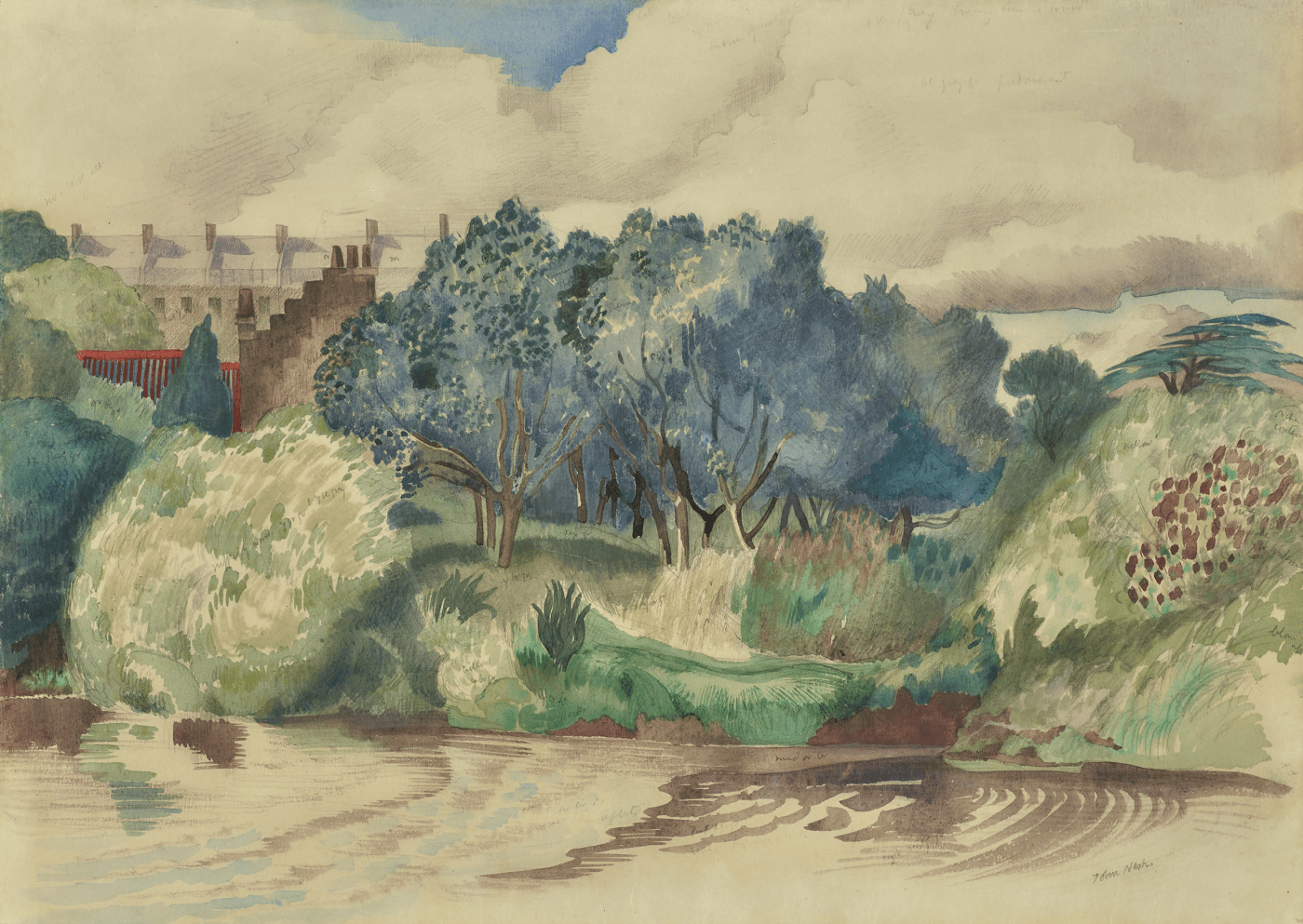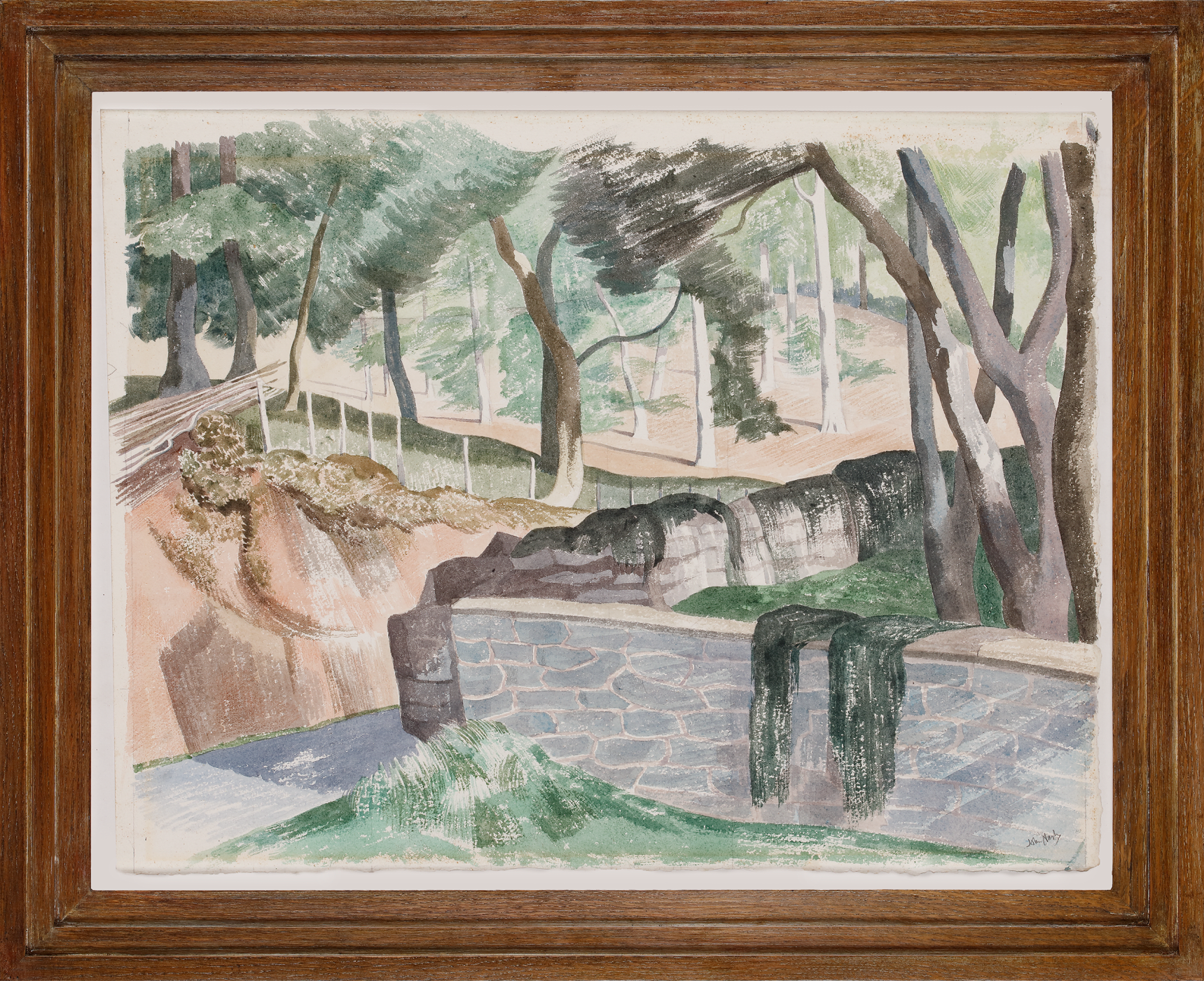Full Biography
John Nash was born in London 1893, where he grew up with this older brother, artist Paul Nash, until the family moved to Iver Heath, Buckinghamshire in 1901. He was educated at Langley Place, Slough, and Wellington College, Berkshire, during which time he developed his interests in botany.
On his brother’s advice, Nash did not receive any formal artistic education. Paul suggested that art school ruined one’s natural talent, and that he was lucky to ‘begin free from the disadvantages of conventional training.’[1] This did not mean, however, that Nash was oblivious to the teachings of prestigious art schools. Through his older brother, he met numerous artists training at the Slade and Royal College of art, who became incredibly influential throughout the development of his early career; Claughton Pellew, Dora Carrington, Eric Ravilious and Edward Bawden.
John Nash was born in London 1893, where he grew up with this older brother, artist Paul Nash, until the family moved to Iver Heath, Buckinghamshire in 1901. He was educated at Langley Place, Slough, and Wellington College, Berkshire, during which time he developed his interests in botany.
On his brother’s advice, Nash did not receive any formal artistic education. Paul suggested that art school ruined one’s natural talent, and that he was lucky to ‘begin free from the disadvantages of conventional training.’[1] This did not mean, however, that Nash was oblivious to the teachings of prestigious art schools. Through his older brother, he met numerous artists training at the Slade and Royal College of art, who became incredibly influential throughout the development of his early career; Claughton Pellew, Dora Carrington, Eric Ravilious and Edward Bawden.
In 1913, Paul and John Nash held a popular joint exhibition at the Dorien Leigh Galleries in South Kensington. Though Nash would become somewhat overshadowed by his older brother, the celebration of these early ventures is notable. During the First World War, in 1916, Nash joined the ‘Artists Rifles’ and saw active service in France, before being appointed an Official War Artist in 1918, a position he would later resume in 1940 for the Admiralty.
Nash’s love for the British countryside grew only stronger after his experiences during the First World War. Art critic, Eric Newton, wrote in 1939; ‘If I wanted to make a foreigner understand the mood of a typical English landscape … I would first show him a good Constable and then one or two of John Nash’s best watercolours.’[2] His love of the British countryside inspired his extensive travels throughout the British Isles throughout the rest of his artistic career.
Nash became ARA in 1940 and RA in 1951 before he was appointed a CBE in 1964. Most notably, in 1967, the Royal Academy of Arts granted him the first ever retrospective exhibition of a living painter. His work can now be found in many private and public collections such as the Tate Gallery, the Courtauld Institute of Art, the Fine Art Museums of San Francisco and the Government Art Collection.











